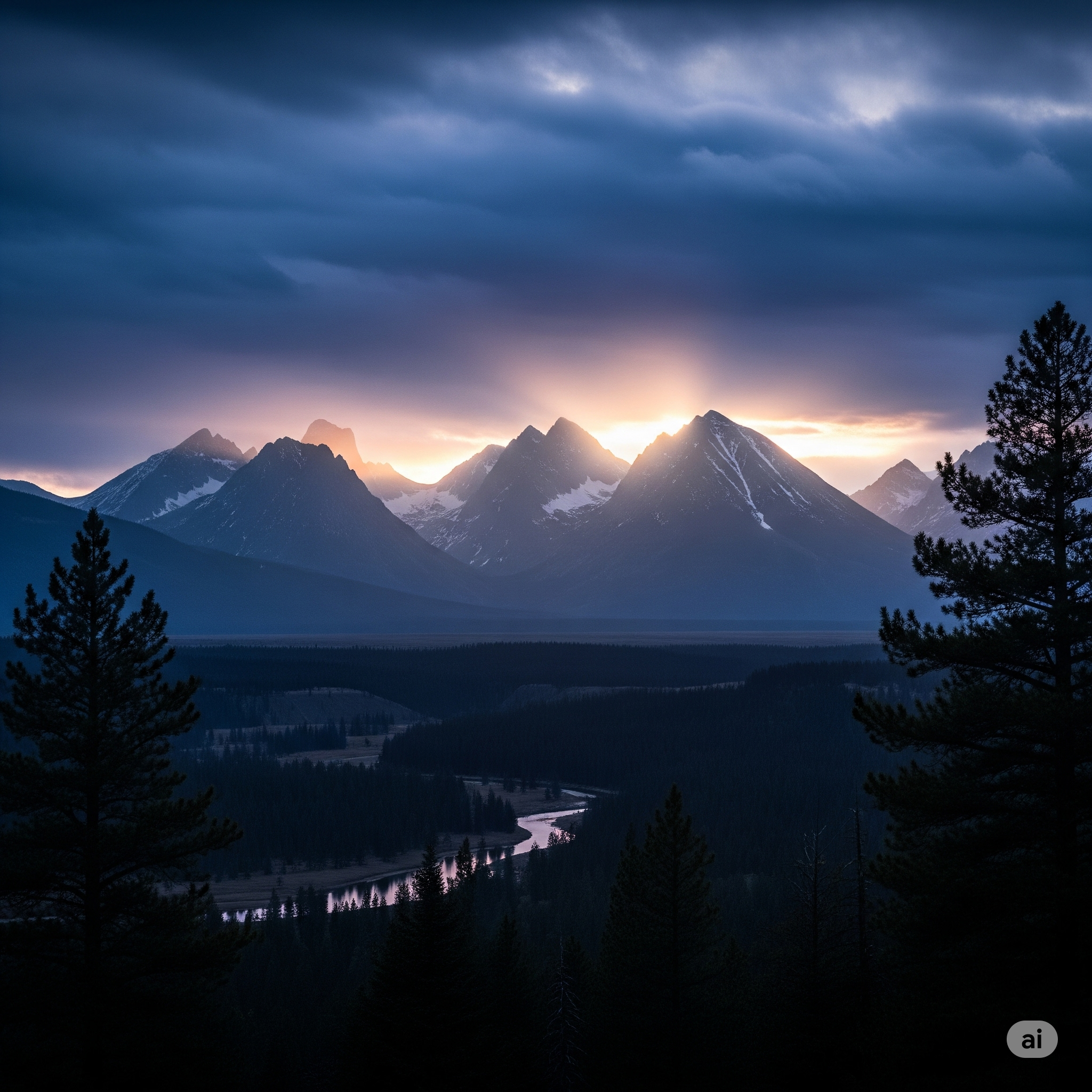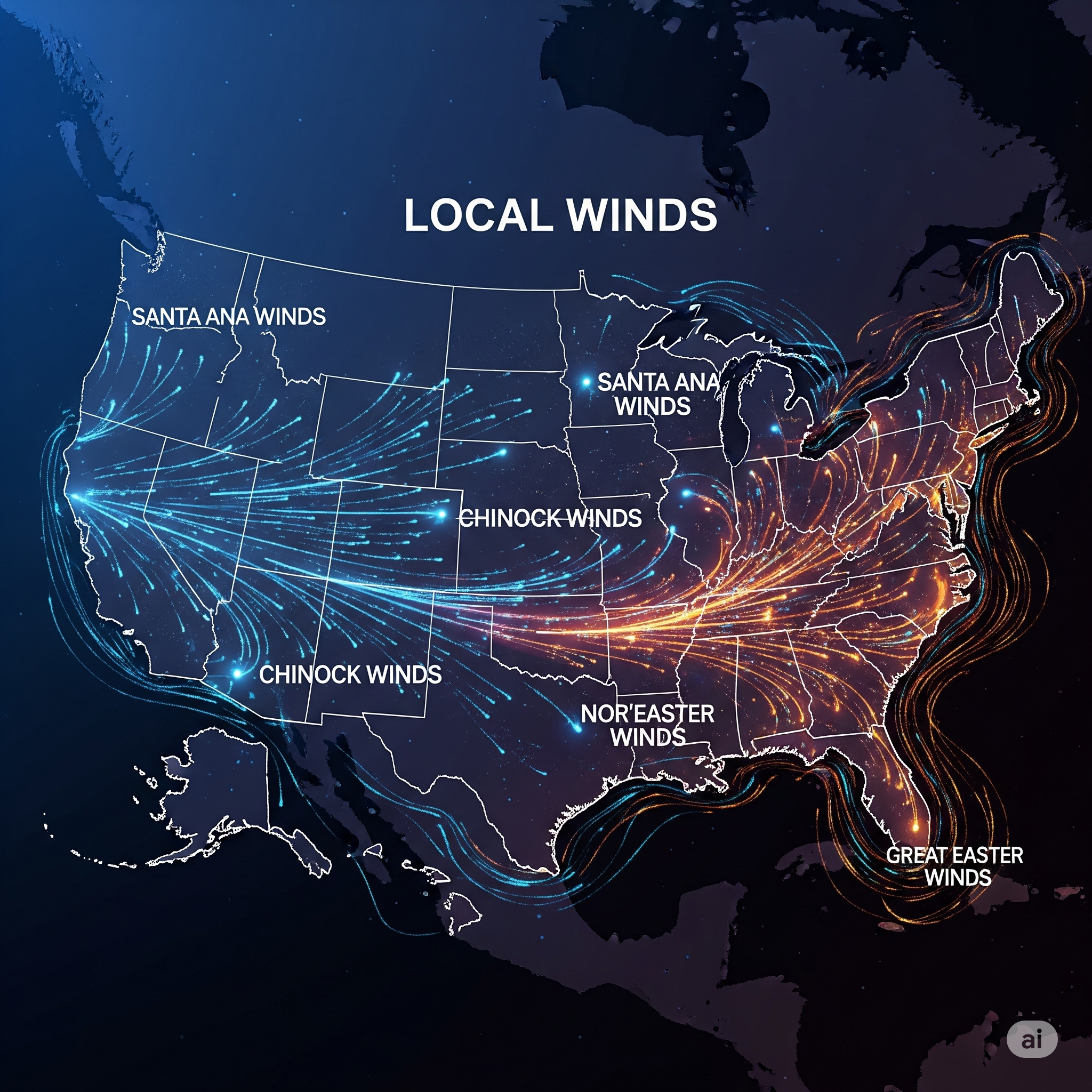Introduction
The United States is home to a vast and diverse system of mountains that play a crucial role in geography, ecology, culture, and history. These mountains are not only important for their natural resources and tourism value but also hold deep cultural and spiritual significance for Native American tribes. Below is a list of 50 notable mountains in the USA, highlighting their location, values, uses, tribal connections, and unique details.
Mountains of the Rocky Mountain Region
- Mount Elbert (Colorado)
- Location: Rocky Mountains, Colorado
- Value: Highest peak in the Rockies (14,440 ft)
- Uses: Hiking, mountaineering, tourism
- Tribal Connection: Ute tribes considered it part of their ancestral land.
- Pikes Peak (Colorado)
- Location: Near Colorado Springs
- Value: Famous for inspiring the song “America the Beautiful”
- Uses: Tourism, “Pikes Peak Highway,” motorsport hill climbs
- Tribe: Ute and Arapaho tribes revered it as sacred.
- Longs Peak (Colorado)
- Location: Rocky Mountain National Park
- Value: Prominent 14er with striking profile
- Uses: Climbing, trekking
- Tribe: Ute tribes recognized its spiritual prominence.
- Mount Massive (Colorado)
- Location: Sawatch Range, Rockies
- Value: Second-highest peak in Colorado
- Uses: Hiking, wildlife habitat
- Tribe: Historic hunting grounds of the Ute.
- Mount Evans (Colorado)
- Location: Near Denver
- Value: Accessible via highest paved road in North America
- Uses: Tourism, research (Mount Evans Observatory)
- Tribe: Ute tribes held spiritual ceremonies here.
- Gannett Peak (Wyoming)
- Location: Wind River Range
- Value: Highest mountain in Wyoming
- Uses: Glacier research, climbing
- Tribe: Shoshone and Arapaho tribes’ ancestral land.
- Grand Teton (Wyoming)
- Location: Teton Range
- Value: Iconic peak in Grand Teton National Park
- Uses: Mountaineering, photography, tourism
- Tribe: Shoshone tribe held deep spiritual ties.
- Mount Moran (Wyoming)
- Location: Teton Range
- Value: Distinctive with basalt dike cutting across
- Uses: Tourism, scientific studies
- Tribe: Linked with Shoshone mythologies.
- Capitol Peak (Colorado)
- Location: Elk Mountains
- Value: Notorious for its “Knife Edge” ridge
- Uses: Extreme mountaineering
- Tribe: Ute tribal hunting land.
- Mount Sneffels (Colorado)
- Location: San Juan Mountains
- Value: Known for striking alpine scenery
- Uses: Tourism, hiking
- Tribe: Navajo stories associate it with sacred lands.
Mountains of the Sierra Nevada and West Coast
- Mount Whitney (California)
- Location: Sierra Nevada
- Value: Highest peak in the continental U.S. (14,505 ft)
- Uses: Hiking (John Muir Trail), tourism
- Tribe: Paiute tribe sacred mountain.
- Half Dome (California)
- Location: Yosemite National Park
- Value: Granite icon of Yosemite
- Uses: Hiking, climbing, photography
- Tribe: Ahwahneechee (Yosemite people) sacred rock.
- El Capitan (California)
- Location: Yosemite Valley
- Value: Famous granite cliff face
- Uses: Rock climbing, tourism
- Tribe: Miwok legends surround its creation.
- Mount Shasta (California)
- Location: Northern California
- Value: Active stratovolcano
- Uses: Spiritual pilgrimage site, hiking
- Tribe: Wintu tribe views it as sacred.
- Mount Lassen (California)
- Location: Lassen Volcanic National Park
- Value: Active volcano (erupted in 1915)
- Uses: Volcanology, tourism
- Tribe: Yana and Atsugewi tribes revered it.
- Mount Rainier (Washington)
- Location: Cascades
- Value: Highest peak in Washington, glacier-covered
- Uses: Climbing, water source for rivers
- Tribe: Puyallup and Nisqually tribes call it Tahoma.
- Mount St. Helens (Washington)
- Location: Cascades
- Value: Famous eruption of 1980
- Uses: Geological research, tourism
- Tribe: Cowlitz and Klickitat tribes spiritual connections.
- Mount Hood (Oregon)
- Location: Oregon Cascades
- Value: Highest peak in Oregon
- Uses: Skiing, tourism
- Tribe: Multnomah legends associate it with tribal heroes.
- Mount Jefferson (Oregon)
- Location: Cascade Range
- Value: Striking volcanic peak
- Uses: Hiking, research
- Tribe: Warm Springs tribe sacred area.
- Mount Adams (Washington)
- Location: Cascade Range
- Value: Prominent volcano
- Uses: Recreation, hydropower watershed
- Tribe: Yakama Nation considers it sacred.
Mountains of Alaska
- Denali (Mount McKinley, Alaska)
- Location: Alaska Range
- Value: Tallest mountain in North America (20,310 ft)
- Uses: Climbing, national park tourism
- Tribe: Koyukon Athabascans name means The High One.
- Mount Foraker (Alaska)
- Location: Alaska Range
- Value: Third-highest in U.S.
- Uses: Climbing
- Tribe: Called Sultana by natives.
- Mount Hunter (Alaska)
- Location: Near Denali
- Value: Technical climbing challenges
- Uses: Mountaineering
- Tribe: Athabascan mythology.
- Mount Redoubt (Alaska)
- Location: Aleutian Range
- Value: Active volcano
- Uses: Volcanology, monitoring
- Tribe: Dena’ina Athabascans.
- Mount Spurr (Alaska)
- Location: Near Anchorage
- Value: Volcano with 1992 eruption
- Uses: Scientific studies
- Tribe: Dena’ina heritage.
- Mount Blackburn (Alaska)
- Location: Wrangell Mountains
- Value: Second-highest volcano in U.S.
- Uses: Research, trekking
- Tribe: Athabascan communities.
- Mount Wrangell (Alaska)
- Location: Wrangell Mountains
- Value: Massive shield volcano
- Uses: Geology studies
- Tribe: Ahtna Athabascans.
- Mount Sanford (Alaska)
- Location: Wrangell Mountains
- Value: One of the largest volcanoes
- Uses: Scientific research
- Tribe: Ahtna sacred place.
- Mount Iliamna (Alaska)
- Location: Aleutian Range
- Value: Active volcano
- Uses: Seismology, tourism
- Tribe: Sugpiaq people.
- Mount Pavlof (Alaska)
- Location: Alaska Peninsula
- Value: One of the most active volcanoes
- Uses: Research
- Tribe: Aleut native heritage.
Appalachians and Eastern U.S.
- Mount Mitchell (North Carolina)
- Location: Blue Ridge Mountains
- Value: Highest peak in the eastern U.S. (6,684 ft)
- Uses: Tourism, ecology research
- Tribe: Cherokee sacred territory.
- Clingmans Dome (Tennessee/North Carolina)
- Location: Great Smoky Mountains
- Value: Tallest in Smokies
- Uses: Tourism, observation tower
- Tribe: Cherokee name Kuwahi (sacred place).
- Mount Washington (New Hampshire)
- Location: White Mountains
- Value: Known for extreme weather
- Uses: Research station, hiking
- Tribe: Abenaki lore.
- Mount Katahdin (Maine)
- Location: Northern Maine
- Value: Northern terminus of Appalachian Trail
- Uses: Hiking, spirituality
- Tribe: Penobscot sacred mountain.
- Mount Marcy (New York)
- Location: Adirondacks
- Value: Highest peak in New York
- Uses: Hiking, watershed
- Tribe: Mohawk traditions.
- Mount Greylock (Massachusetts)
- Location: Berkshire Hills
- Value: Highest point in Massachusetts
- Uses: Tourism
- Tribe: Mohican sacred land.
- Mount Rogers (Virginia)
- Location: Blue Ridge
- Value: Tallest peak in Virginia
- Uses: Hiking, ecology
- Tribe: Cherokee influence.
- Mount Le Conte (Tennessee)
- Location: Smoky Mountains
- Value: Popular for hiking trails
- Uses: Tourism
- Tribe: Cherokee heritage.
- Mount Monadnock (New Hampshire)
- Location: New England
- Value: Famous “stand-alone” mountain
- Uses: Hiking, culture (inspired Emerson, Thoreau)
- Tribe: Abenaki word “mountain that stands alone.”
- Black Elk Peak (South Dakota)
- Location: Black Hills
- Value: Highest peak east of Rockies
- Uses: Spiritual center, hiking
- Tribe: Lakota Sioux sacred peak.
Miscellaneous Important Mountains
- Mauna Kea (Hawaii)
- Location: Big Island of Hawaii
- Value: Tallest mountain from base to summit on Earth
- Uses: Astronomy observatories
- Tribe: Native Hawaiians view it as sacred.
- Mauna Loa (Hawaii)
- Location: Hawaii
- Value: Largest volcano on Earth
- Uses: Volcanology, research
- Tribe: Hawaiian spiritual traditions.
- Mount Olympus (Washington)
- Location: Olympic Peninsula
- Value: Center of Olympic National Park
- Uses: Tourism, glaciers
- Tribe: Hoh and Quileute mythology.
- Mount Baker (Washington)
- Location: Cascades
- Value: Active volcano
- Uses: Skiing, monitoring
- Tribe: Lummi Nation.
- Mount San Jacinto (California)
- Location: Southern California
- Value: Panoramic desert views
- Uses: Hiking, tourism
- Tribe: Cahuilla people sacred place.
- Mount Charleston (Nevada)
- Location: Spring Mountains
- Value: Recreation near Las Vegas
- Uses: Hiking, skiing
- Tribe: Paiute tribe reverence.
- Mount Humphreys (Arizona)
- Location: San Francisco Peaks
- Value: Highest peak in Arizona
- Uses: Skiing, research
- Tribe: Hopi, Navajo consider sacred.
- Mount Wheeler (Nevada)
- Location: Great Basin National Park
- Value: Highest in Snake Range
- Uses: Astronomy, hiking
- Tribe: Shoshone–Paiute heritage.
- Mount Borah (Idaho)
- Location: Lost River Range
- Value: Tallest peak in Idaho
- Uses: Hiking, geology
- Tribe: Shoshone-Bannock.
- Kings Peak (Utah)
- Location: Uinta Mountains
- Value: Tallest peak in Utah
- Uses: Backpacking, wilderness tourism
- Tribe: Ute sacred region.
Conclusion
The mountains of the United States are not only geographical landmarks but also cultural symbols, ecological treasures, and historical sites. They provide water, forests, recreation, and spiritual identity to local communities and tribes. Understanding them helps appreciate how geography, culture, and nature intertwine in shaping the American landscape.




